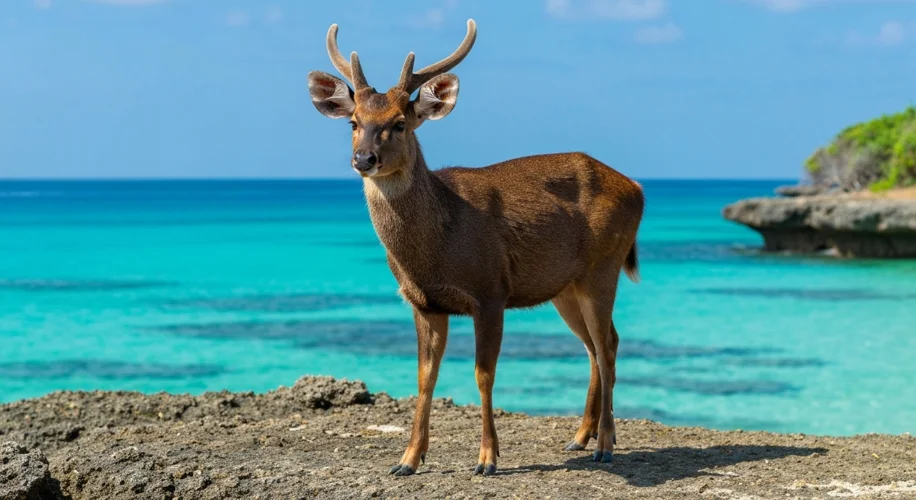Did you know that in the stunning Komodo National Park, home to the famous Komodo dragons, there’s another fascinating creature thriving? It’s the Timor deer, and they have a remarkable ability: they can drink salty seawater.
This might sound impossible, right? Our bodies, and many animals’, would react quite negatively to ingesting a lot of salt. It dehydrates us, as our kidneys work overtime to process the excess salt. So, how do these deer manage?
It all comes down to a biological superpower called osmoregulation. This is the process by which animals maintain a balance of water and electrolytes (like salt) in their bodies. For most land mammals, drinking seawater is a losing game. The concentration of salt in the ocean is much higher than in their body fluids. To get rid of the extra salt, their kidneys need to use more water than they consume from the salty drink, leading to dehydration.
Timor deer, however, have evolved special adaptations. They possess highly efficient kidneys that are much better at concentrating urine. This means they can excrete excess salt with minimal water loss. Think of it like having a super-efficient filter that doesn’t let much precious water escape.
Beyond just their kidneys, they likely have other physiological tricks up their sleeves. It’s possible they have specific cellular mechanisms to help manage salt levels and maintain hydration. Their diet also plays a role. While they can drink seawater, they likely supplement this with freshwater sources when available, and their food, like grasses and leaves, contains water too.
This incredible adaptation is a testament to the power of evolution and how life finds a way to survive even in challenging environments. The Timor deer in Komodo National Park aren’t just surviving; they’re thriving, thanks to a sophisticated internal system that keeps them perfectly hydrated, even with a salty drink. It’s a fantastic example of how different species have developed unique strategies to navigate their world.

